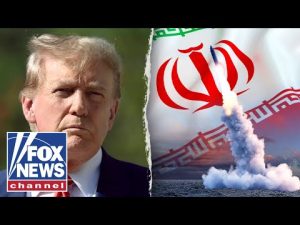**A Glimpse of Safety in D.C.: Trump’s Urban Strategy Takes Center Stage**
In a surprising turn of events, Washington D.C. has experienced a remarkable decrease in violent crime, stirring conversations about urban safety and governance. Over the past twelve days, the nation’s capital reported no murders, a statistic that would have been unthinkable during previous summers when violence often peaks. This drop is being attributed to a combination of increased policing and a strong message from leadership about the importance of maintaining order—clearly resonating with many city residents.
The city, known for its bustling streets and vibrant communities, has received a much-needed breather from the stormy weather of crime, especially during the sweltering month of August. Historically, this time of year sees spikes in crime as youths, often uninhibited by the constraints of school commitments, flock to the streets. Yet, the atmosphere in D.C. has shifted, with residents expressing a newfound sense of security and freedom to enjoy their surroundings, whether it’s walking to the grocery store or taking a family trip to the park without the constant worry of becoming a victim of crime.
At the heart of this urban success story is an argument that the key to reducing crime lies not in complicated social programs, but rather in a straightforward application of law enforcement. The presence of a strong police force, alongside a clear stance against criminal activity, has demonstrated that a firm approach can lead to safer neighborhoods. This has raised eyebrows, particularly among those who had previously advocated for more lenient policies toward crime and criminals. It seems that for some, the realization is dawning that crime can be deterred simply through assertive governance.
Interestingly, some observers are calling for broader accountability and recognition for the strategies that have led to this success in D.C. There’s a buzz surrounding the idea that past leaders who have been blamed for urban chaos should take notes from this current administration, particularly in cities plagued by violence and crime. The narrative suggests that if D.C. can find a path to safety, there’s hope for other cities like Chicago, which battles similar issues but faces far more reluctant political will to enforce stringent measures.
However, all seems not to be smooth sailing on this voyage towards urban renewal. Critics and skeptics have emerged, questioning the methods and the implications of such decisive actions in policing. Historical contexts and systemic issues are being hotly debated, but many agree that the results speak volumes. With this newfound approach, communities in D.C. are vying for more than just a fleeting glimpse of safety; they’re hoping to keep those statistics sliding in the right direction for good.
As conversations continue about the approach to governance and public safety, the focus seems to be shifting. Is it time for others to adopt a similar model, or do cities need to prioritize addressing root causes of crime in a more humane way? Regardless, D.C. has set a benchmark, creating a critical dialogue about the effectiveness of traditional law enforcement in urban settings. The challenge now lies in maintaining this positive trend and ensuring that the people can enjoy the freedom to live without fear of violence, one day at a time.







